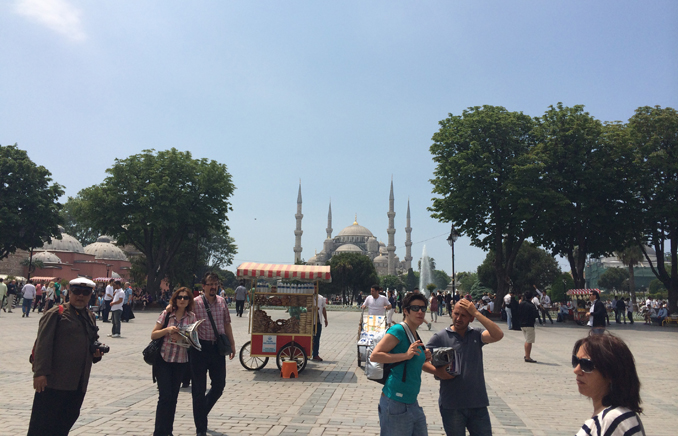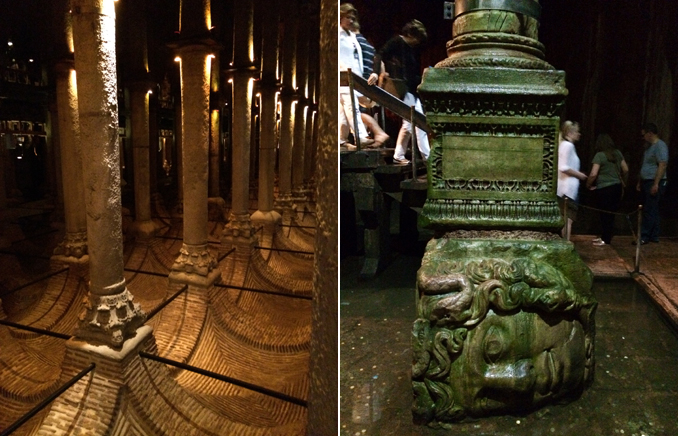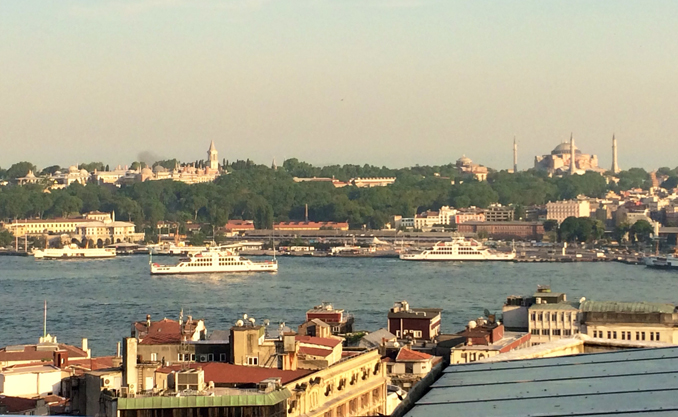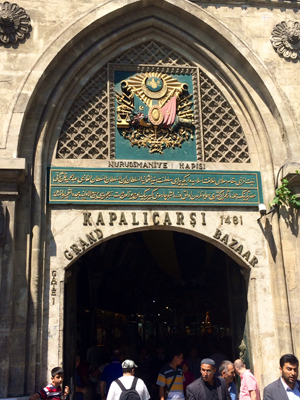Written by: Zahrah Mazhar
Posted on: June 30, 2014 |  | 中文
| 中文
Sultanahmet Square at night
You can tell you’re in Europe when you start driving from the Istanbul Ataturk Airport towards the city centre, but you know you’re in Istanbul the moment you arrive at Sultanahmet.
Make your way through the narrow cobblestone streets packed with cars, tourists bargaining at shops along the way and residents in a hurry to be somewhere on time and you’re in the heart of Istanbul. Boutique hotels and shops are lined up along the roads leading up to the Sultanahmet Square, from where the grand minarets of the Sultanahmet Camii (Blue Mosque) and the Ayasofya (Hagia Sophia) beckon visitors. Sultanahmet lies on the first of the seven hills on which the ancient city of Byzantium, now known as Istanbul, was founded. Home to a number of Istanbul’s most important monuments and museums - such as the Museum of Turkish and Islamic Art, Istanbul Archaeology Museums, and the Great Palace Mosaic Museum – this part of the city grew in both the Byzantine and Ottoman eras.
 |
The area in front of the Blue Mosque, a city park called At Meydani, covers the site of Istanbul’s Byzantine Hippodrome which used to be the heart of political and sporting activities in the city. Originally U-shaped, the area is now known as Sultanahmet Square. The Hippodrome was constructed by Emperor Septimius Severus in 200 AD but it flourished under Constantine the Great, serving as a ground for chariot races and a venue for social gatherings. The Hippodrome also witnessed some of the bloodiest episodes in Istanbul’s history, including the Nika riot which left thousands of people dead and destroyed the nearby Hagia Sophia.
Only a few fragments of the original structure remain which include the base of the Serpent Column, the 3,500-year-old Obelisk of Thutmose III, and the Column of Constantine.
Beneath the little park at the northern end of the Hippodrome is another historical gem - Yerebatan Sarnici, known in English as the ‘Basilica Cistern’ because of its location on the site of an ancient basilica. The grand underwater cistern was nicknamed ‘The Sunken Palace’ by the public, perhaps because that is exactly what it looks like with its 336 marble columns. A word of caution for anyone who wants to explore the impressive cistern: while it may be pleasantly cool - especially in summers - the raised platforms are extremely slippery so wear shoes with the best grip.
 |
The cistern, known to be the largest of the several ancient cisterns beneath Istanbul, was built in 532 AD by the Byzantine Emperor Justinian I to store fresh water for the Great Palace and nearby buildings. It went through multiple restorations during the Ottoman rule but then for centuries it was forgotten - till one day Petrus Gyllius, who came to Constantinople in search of Byzantine monuments, rediscovered it. According to a guide at the cistern, initially visitors could rent a rowboat to float past the columns. But to really attract tourists, the cistern was given a facelift in the late 1980s when mud was taken out and elevated walkways were installed – all with the atmospheric lighting and soft music to create a certain ‘underground’ ambiance. There is even a little cafe near the exit but perhaps not the most tempting location to have a cup of coffee. The lighting does wonders in bringing out the beauty of the ancient columns which lead visitors towards the two giant pillar bases in the shape of Medusa’s head at the far end of the cistern. It is not known where the Medusa heads were taken from, but among the many myths is that they may have been pulled out of an older pagan temple, where motifs of the famous Gorgon Medusa were used as a protective emblem. For 10 TL, the cistern is a good way to spend 30 minutes appreciating the Roman architecture.
The Hagia Sophia is across the street from the Basilica Cistern while the grand residence of the Ottoman sultans, Topkapi Sarayi (palace), is just beyond the Hagia Sophia. Do take a stroll down the Sogukcesme Sokagi (Street of the Cold Fountain), a car-free small street built right against the walls of Palace. The street is lined with beautiful Ottoman era wooden mansions, dating back to the 19th and 20th centuries, which were renovated in the 1980s.
The best place to take a break from monument-hopping, while also soaking in all the historical and architectural splendour, is the Sultanahmet Park which has the Hagia Sophia on one end and the Blue Mosque on the other. Tourists browsing through travel guides are found lounging under the shade of the tree while nearby vendors sell roasted chestnuts, corn and Simit - a circular local bread served plain, with cheese or with chocolate.
 |
View of the old city from Beyoglu district across the Golden Horn |
Although accessible by buses, tram and taxis, most people prefer coming to Sultanahmet on foot as the walk alone offers a chance to explore different parts of the city. The busy area is a part of the Historical Peninsula, surrounded by the Golden Horn, Bosphorus and the Sea of Marmara. Walks leading in and out of Sultanahmet offer a picturesque view of Istanbul’s Asian side as well as the European side which is separated from the old city. The streets leading down to the harbour start at the Hippodrome and follow the slopes of the hill.
 |
The Sultanahmet area is full of shops selling magnets, Turkish jewellery, lamps and ceramic tiles, and plenty of other items targeted to attract tourists eager to take mementos back home. But if you’re looking for options beyond your imagination, then take the Divan Yolu street which starts at the Sultanahmet Square and head west towards the Kapalicarsi (Grand Bazaar). Walk only 15 to 20 minutes past restaurants, Turkish Hammams, tombs and mosques and you’ll be at the doorstep of one of the oldest and biggest covered bazaars in the world. Fair warning, the shopkeepers are sharp, witty and could easily rob you blind - even though you might think you bargained well. The bazaar, which was initially a small covered market during the time of Mehmet the Conqueror, is currently spread over more than 61 lanes and has more than 4,000 shops. For the best buys, dig out the tiny boutiques and shops tucked away in the side streets.
Needless to say, a trip to Istanbul cannot be complete without visiting Sultanahmet but to truly do justice to the historical gem, don’t rush your visit. Give yourself at least two, if not three days, to explore the area and you’ll find a story in every street you walk and at every corner you turn.
Images provided by author
Click to view picture gallery
You may also like: